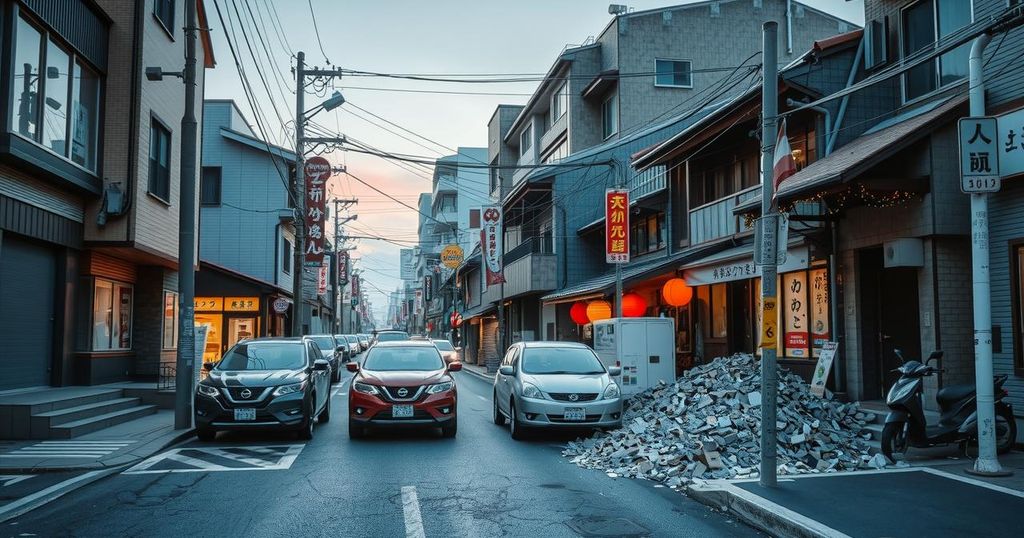Wajima’s Struggle: Recovery and Resilience Following the New Year Earthquake

A year after a devastating earthquake on New Year’s Day, Wajima, Japan, struggles with recovery. Survivors like 83-year-old Sueko Naka now live in temporary units, haunted by trauma and an uncertain future. The earthquake claimed nearly 470 lives, causing significant destruction. Reconstruction has been slow, further complicated by subsequent disasters and an aging population. Efforts are being made to encourage rebuilding and retain residents in the face of these challenges.
In the aftermath of the catastrophic earthquake on New Year’s Day last year, residents of Wajima, particularly the elderly, face significant challenges. Sueko Naka, an 83-year-old survivor, now resides in a temporary unit with her family, having lost the home where she wished to spend her remaining years. “When I imagine I might die here, I can’t sleep well,” she expresses, highlighting the lingering trauma and anxiety that shadows her daily life.
The earthquake, measuring 7.5 on the Richter scale, was Japan’s most deadly in over a decade, resulting in nearly 470 fatalities. It caused massive destruction, including tsunami waves and devastating fires, which obliterated parts of Wajima’s city center, including its historic marketplace. Aftershocks and harsh winter conditions exacerbated the struggles for the approximately 40,000 evacuees, many of whom are elderly and still residing in emergency shelters.
Despite the efforts toward recovery, including external aid, Wajima’s reconstruction processes remain sluggish, with only one-quarter of the severely damaged structures cleared. An overwhelming sense of uncertainty grips the community, intensified by subsequent natural disasters, such as severe flooding that claimed additional lives. “We received various forms of external support, and there was an emerging sense that everyone was going to start over, but the torrential rain swept away everything,” laments Wajima city official Yasuaki Ipponmatsu.
The psychological toll on families is profound. As Naka shares about her harrowing experience during the quake, she recalls feeling her house collapse around her, a day that robbed her of peace. The disaster affected over 100,000 buildings and exacerbated Japan’s demographic crisis, causing many to relocate. Currently, around 21,000 residents remain in Wajima, marking a significant decline in population.
Local officials are cognizant of these challenges, recognizing the community’s urgent need for renewal. Initiatives are being explored to encourage youth retention and facilitate rebuilding. Nonetheless, the path to recovery remains fraught with obstacles as they grapple with damaged infrastructure and the psychological scars left by repeated calamities.
The event that shook Wajima on January 1, 2022, marks one of the worst natural disasters in Japan in recent history. With nearly 470 lives lost and significant damage to infrastructure, the residents were left grappling with the emotional and physical ramifications of this seismic trauma. The region’s struggles symbolize broader challenges faced by many rural areas in Japan, particularly regarding demographic decline and economic sustainability. This story reflects resilience and the ongoing efforts of communities to rebuild their lives after enduring catastrophic events.
The ongoing recovery in Wajima from last year’s devastating earthquake continues to unfold, revealing the stark realities faced by survivors like Sueko Naka. As the community confronts slow reconstruction and persistent fears of future disasters, the narrative serves as a poignant reminder of human resilience and the profound impact of natural calamities on community dynamics. Wajima’s trajectory will hinge on collective efforts to revitalize the area and retain its residents amidst a daunting landscape of loss.
Original Source: www.taipeitimes.com








